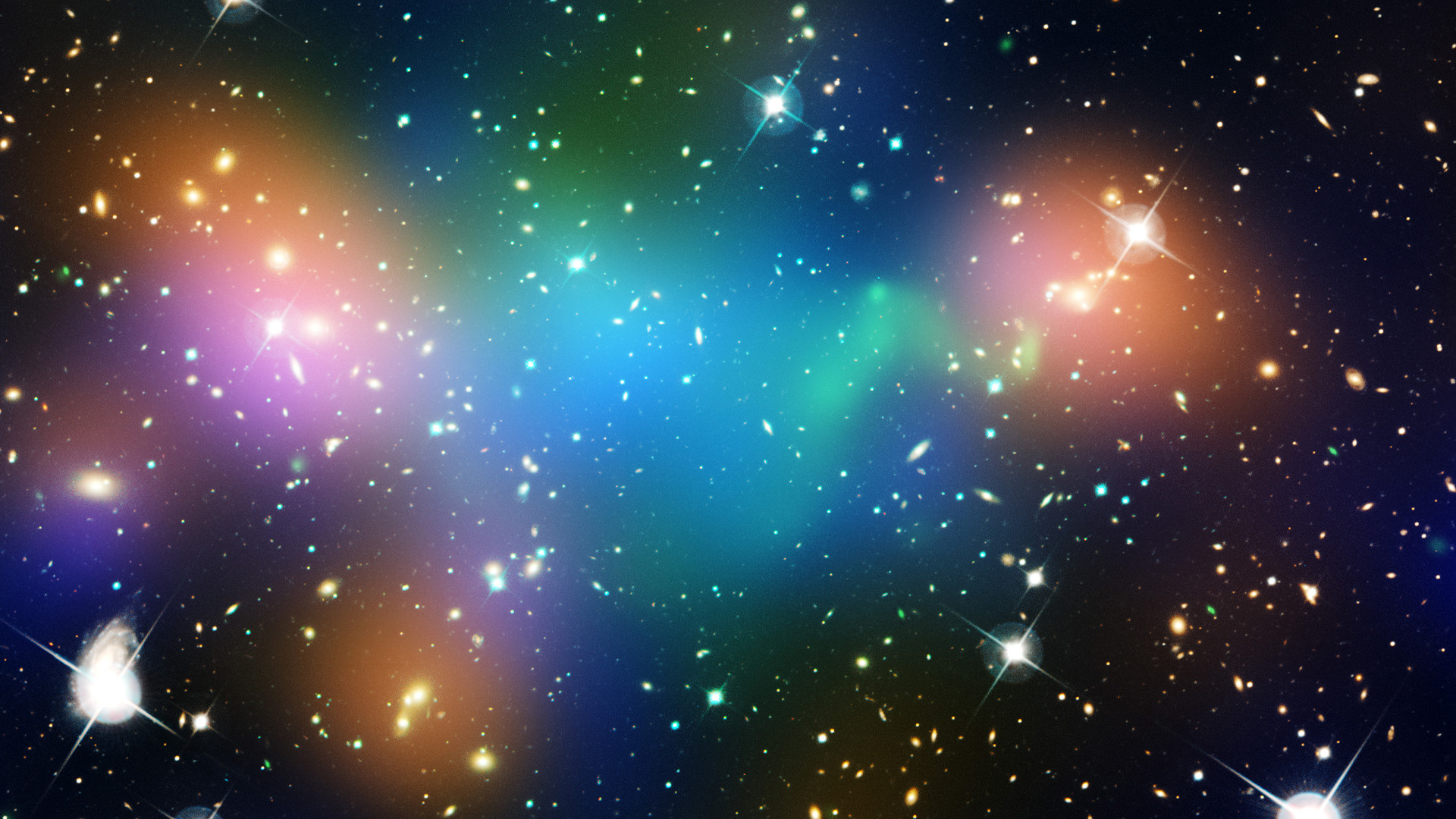
The universe may have produced dark matter in the first few minutes of the Big Bang, according to new research. Those particles then got trapped into ultradense pockets. Some of those pockets splintered off to become black holes, which then dissolved into a shower of multiple dark matter particle "species," creating a "dark matter periodic table" of invisible elements, the study authors suggest.
Physicists still struggle to explain dark matter — the mysterious, invisible form of matter that makes up the vast majority of the universe's mass. While cosmologists and astronomers have identified circumstantial evidence for the existence of dark matter, from the rotation rates of stars within galaxies to the largest structures visible in the cosmos, they have not identified exactly what the dark matter is.
Previous work assumed that dark matter was simple: a single kind of extremely lightweight particle, flooding the universe, that hardly ever interacted with normal matter. But intense searches for new such particles have come up empty. That led cosmologists to wonder if the dark matter particles might be much rarer, but also much heavier. However, theoretical physicists have struggled to find models that would seed the early universe with the right number of such heavy particles.
In the new study, published in October in the preprint database arXiv, a team of cosmologists found a way to generate massive dark matter particles soon after the Big Bang. The trick was to sprinkle in black holes.
The paper noted that the early universe underwent severe phase transitions as the forces of nature split off from each other, going from a single unified force into the four fundamental forces of today. At each transition, the underlying physics changed. This isn't as wild as it sounds, as scientists can reproduce the last of these transitions in particle accelerators: At high enough energies, recreating the first few seconds of the Big Bang, we can observe the electromagnetic and weak nuclear forces merging into one.
The researchers found that ultraheavy dark matter could get trapped during one of these early-universe phase transitions. If the transition was messy, it would trigger the formation of bubbles, where some pockets of the universe had transitioned to the new physics while the rest had not yet made the change (like water boiling, with the gas phase of water trapped in bubbles surrounded by liquid).
In their model, the earliest dark matter was light but dark matter from later periods was heavy. In this scenario, dark matter gets trapped inside the bubbles, where the densities skyrocket to the point where all the dark matter collapses and forms black holes. Those black holes soon evaporate via Hawking radiation — in which radiation slowly "leaks" out of black holes in the form of thermal energy — well before the appearance of normal matter.
But as the black holes evaporate, dark matter makes a comeback, as the black holes spit out new dark matter particles before they die, the team's model showed. This clever mechanism limits the total amount of massive dark matter in the universe, because only so much can escape the black holes before they evaporate completely.
This evaporation process also generates a slew of dark matter particle species. While all of the dark matter particles share many characteristics (such as likely near-total invisibility), they would differ in their masses, speeds, and ways of interacting with normal matter. In this model, dark matter is a vast collection of different kinds of particles, much like normal matter is composed of the entire periodic table of the elements.
Experimental evidence for this idea is still a long ways away, as it is right now a deeply hypothetical concept. Direct detection of one or more dark matter particle species would certainly bolster the idea. And astronomers are currently developing ways to observe gravitational waves from the big bang, which would give us direct observational access to this critical epoch in the history of the universe.
There could be all sorts of new interactions among these dark matter species, leading to a complex web of physics acting invisibly throughout the universe.







